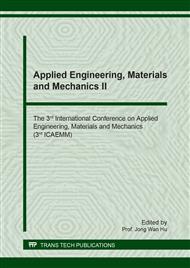p.179
p.184
p.189
p.196
p.202
p.208
p.214
p.220
p.225
Grain Size Effect on Saddle Phenomenon in V-Bending Process of Thin Sheet Metal
Abstract:
The ability for predicting the springback on sheet metal bending processes is identified as an important feature of the ability for predicting the final geometry of sheet metal parts. The grain size effect makes the difficult on application of traditional design method in processing. As through tool and processing design, to understand the effects of grain size effects is an important and powerful way to effectively compensate for and eliminate the springback. In this paper, 99.5% pure iron specimens were annealed at different temperature to obtain the specified grain sizes. The effects of different grain sizes on the saddle after V-bending of the thin sheet metal were investigated. The results show that at the same thickness of specimens, the grain size has no significant effect on the saddle height. However, with increasing the thickness of the specimens the saddle will also be more prominent protruding height. The concave side of bent specimen is against the compression force and its grains structure tend to a round shape, whereas the convex side is against the tensile force and its grains structure tend to a flaky shape.
Info:
Periodical:
Pages:
202-207
Citation:
Online since:
July 2018
Authors:
Keywords:
Price:
Сopyright:
© 2018 Trans Tech Publications Ltd. All Rights Reserved
Share:
Citation:


